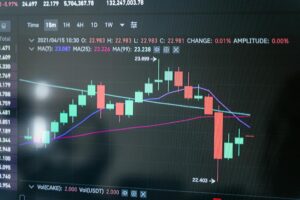“`html
Japan’s Nikkei Rises on Futures Demand, Weaker Yen
Japan’s Nikkei 225 index has been making headlines again, climbing higher as demand for futures and a softer yen fuel investor optimism. The benchmark index, a bellwether for Japan’s stock market, reflects renewed confidence amid shifting economic winds. But what’s really driving this upward momentum—and can it last?
Understanding the Nikkei 225
The Nikkei 225 is Japan’s premier stock market index, tracking the performance of 225 blue-chip companies listed on the Tokyo Stock Exchange. Much like the Dow Jones Industrial Average in the U.S., it serves as a barometer for the nation’s economic health. Historically, the Nikkei has seen dramatic swings—from the dizzying heights of the 1980s bubble to the prolonged stagnation of the “Lost Decade.” Today, it remains a critical gauge for global investors eyeing opportunities in Asia.
Factors Driving the Nikkei’s Rise
1. Increased Demand for Futures
Futures trading has played a pivotal role in the Nikkei’s recent gains. Investors are snapping up futures contracts, betting on continued market strength. This surge is partly driven by hedging strategies, as institutions seek to lock in positions ahead of potential volatility. Compared to last year’s cautious trading, the current appetite for futures suggests a bolder stance—almost like a spretero pushing off the blocks after a hesitant start.
Analysts point to improving corporate earnings and a stabilizing global economy as key catalysts. Still, some warn that futures-driven rallies can be fickle, especially if underlying fundamentals don’t keep pace.
2. Weaker Yen Boosting Market Sentiment
A softer yen has been another tailwind for the Nikkei. When the yen depreciates, Japan’s export-heavy companies—think Toyota, Sony, and Panasonic—reap the benefits. Their overseas earnings translate into more yen, padding profit margins and lifting stock prices. Over the past month, the yen’s slide against the dollar has mirrored the Nikkei’s climb, reinforcing this long-standing correlation.
But how low can the yen go? With the Bank of Japan maintaining ultra-loose monetary policies, further depreciation seems possible. Yet, if the yen weakens too much, it could spark inflation concerns or even political backlash.
Market Sentiment and Investor Behavior
Foreign investors have been key players in this rally, drawn by Japan’s relatively attractive valuations compared to overheated U.S. markets. Short-term traders are riding the momentum, while long-term investors eye structural reforms under Prime Minister Kishida’s administration. Still, the mood remains cautious—like a tightrope walker balancing between optimism and realism.
Challenges and Risks
Not everything is smooth sailing. Rising global interest rates could dampen enthusiasm for riskier assets, including Japanese equities. The Bank of Japan’s policy decisions will also be critical; any shift away from yield curve control might rattle markets. Geopolitical tensions, from U.S.-China relations to North Korea’s missile tests, add another layer of uncertainty.
Expert Insights and Forecasts
John Vail, Chief Global Strategist at Nikko Asset Management, notes, “The Nikkei’s rally has legs, but it’s contingent on the yen remaining weak and corporate earnings delivering.” Others, like analysts at Lazard, caution that the index may face resistance near historic highs unless wage growth and domestic consumption pick up.
Key indicators to watch include:
- The yen’s exchange rate against the dollar and euro
- Quarterly earnings reports from major exporters
- Bank of Japan’s stance on monetary policy
Conclusion
The Nikkei’s recent rise highlights the interplay of futures trading and currency movements—a dance that could continue if global conditions align. While risks loom, the current momentum offers a compelling narrative for investors. Will this be the start of a sustained upswing, or just another fleeting rally?
Stay tuned for updates as we monitor Japan’s market dynamics. For deeper insights, explore our analysis on the Bank of Japan’s policy shifts or the yen’s trajectory in global trade.
Source: Livemint – Markets
“`












